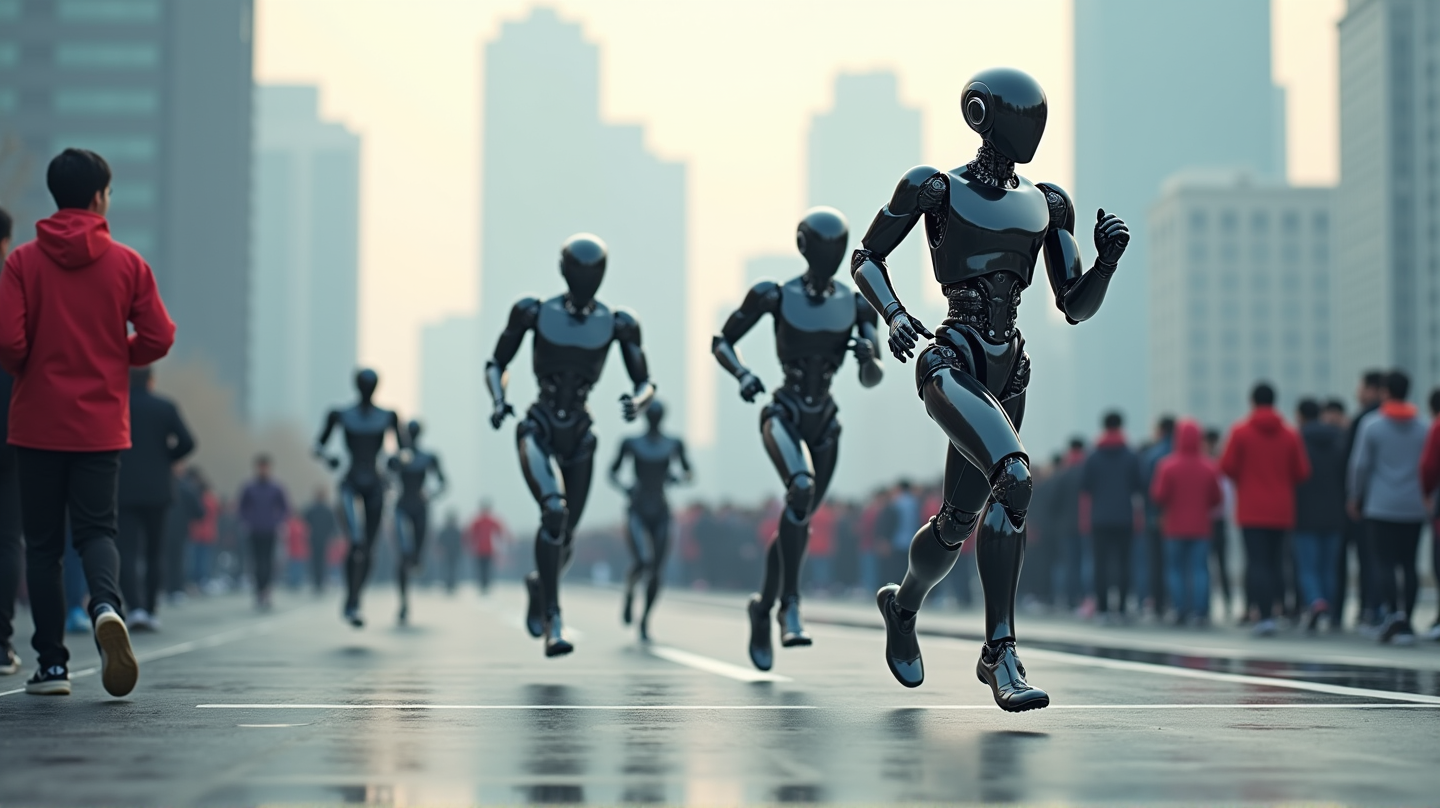This Saturday in Beijing, a new chapter in technological advancement was unveiled as twenty-one humanoid robots took to the starting line of the Yizhuang half-marathon. This groundbreaking event marked the first time robots ran alongside human participants on a 21-kilometre racetrack, pioneering a monumental leap in artificial intelligence and robotics technology.
A Diverse Line-Up of Robotic Contenders
The race saw participation from an eclectic mix of humanoid robots, each a testament to the ingenuity of their creators. Prestigious Chinese firms like DroidVP and Noetix Robotics contributed their mechanical runners, each varied in height from 1.2 to 1.8 meters, symbolizing the versatility in humanoid robot design. Beyond mechanical prowess, these robots offered a unique aesthetic value, with one robot sporting a female face capable of smiling and winking, creating an alluring human-robot interaction.
The Technical Edge of Robotic Racing
Labelled by Beijing officials as a ‘motor race,’ the event underscored the collaborative efforts of engineering teams and navigation experts. These teams were pivotal in guiding their robotic counterparts through the challenging marathon course, showcasing significant strides in robot locomotion and AI navigation systems. According to Times of India, observers were enthralled by the stability and sophistication these robots exhibited on the track.
Overcoming Challenges: A Team Effort
Though these robots embodied technological innovation, their journey was not without its tribulations. Many of them required trainer support, highlighting the nascent stage of humanoid robotic races. Trainers provided vital assistance, whether in troubleshooting technical glitches or physically ensuring the robots stayed the course. Such interventions demonstrated the ongoing journey toward seamless robotic autonomy in competitive settings.
Victorious Performance by Tiangong Ultra
Among the participants, Tiangong Ultra emerged as a standout performer, securing the victory by completing the marathon in an impressive 2 hours and 40 minutes. This feat, achieved by the Beijing Innovation Centre of Human Robotics, shone a spotlight on their sophisticated design and cutting-edge technology. Chief technology officer Tang Jian hailed Tiangong Ultra’s long legs and advanced running algorithms as key contributors to its success.
Navigating the Path Forward
Despite significant achievements, the event highlighted challenges that continue to bedevil humanoid robotics. Issues such as mechanical failures and navigation mishaps underscored the continued need for enhancement in robot reliability under real-world conditions. Still, the success of Tiangong Ultra and its competitors points to China’s firm commitment to leading the charge in robotic innovation.
China’s humanoid robot marathon doesn’t just signify a milestone in the field of robotics—it heralds a future where human-robot collaboration reaches new heights. As these mechanical athletes lace up, the world watches with anticipation for what the future holds.
